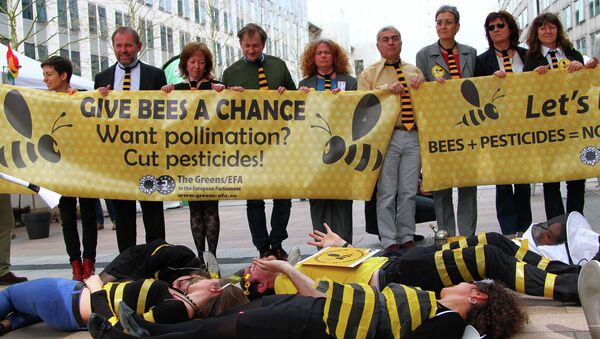The US Geological Survey’s study onducted for the first time nationally says “at least one neonicotinoid detected in 63% of the 48 streams sampled.”
Urban and agricultural areas have been investigated for having neonicotinoids insecticides, which damage non-target water life and terrestrial organisms.
Insecticides Similar to Nicotine Found in about Half of Sampled Streams across the United States http://t.co/GU7Rnjmo2T #USGSnews
— USGS (@USGS) August 18, 2015
“In the study, neonicotinoids insecticides were found throughout the year in urban streams while pulses of neonicotinoids were typical in agricultural streams during crop planting season,” said USGS research chemist Michelle Hladik in a press statement.
Neonics, systemic pesticides carried mostly by bees to flowers and roots, have been widely used for decades as a seed coating and to control unwanted crop pests.
Are neonicotinoid insecticides responsible for #HoneyBee die-offs? Insecticide makers say no. http://t.co/VrfiT2psxy pic.twitter.com/9Z9VcK2Uiu
— USGS Wildlife Health (@USGSWILDLIFE) August 20, 2015
The sharp spike in honeybee deaths seems to be worsening, posing an acute danger to the food supply that depends on the little insects which do about $10 to $15 billion worth of work pollinating our crops.


